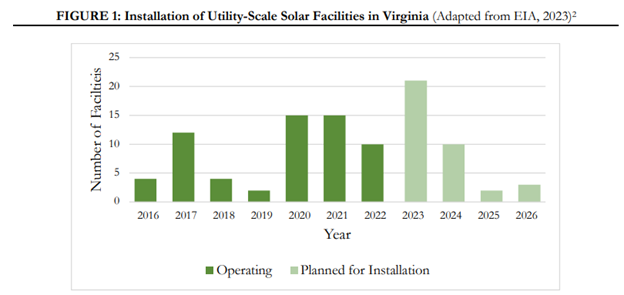Regional Economic Impacts of Land Conversions to Solar Production
Recent regulations make regional economic impact analyses (EIAs) more relevant to evaluating the effectiveness of solar energy in Virginia. The regulations themselves, particularly House Bill 206 (HB 206) have tradeoffs and ramifications for developers and local organizations looking for guidance on how to measure the direct and indirect economic impacts of using Virginia’s land resources for solar energy generation. This report looks at changes in Virginia’s approach to energy regulation in response to House Bill 206 and examines the causes and consequences of insufficient EIAs on energy regulatory measures.

The report explores four energy policy options for converting land to solar generation: 1) let present trends continue; 2) standardize procedures for regional input-output (IO) analysis; 3) develop a statewide computable general equilibrium (CGE) model; 4) refine the National Renewable Energy Laboratory (NREL) Jobs and Economic Development Indicator (JEDI) for utility-scale solar photovoltaic projects. The four alternatives are evaluated on cost, empirical effectiveness, accessibility, administrative resilience, and implementation timeline. This paper’s final recommendation is to pursue Alternative 4, which performs the best across all criteria. Analysis suggests this alternative would yield reasonably accurate impact assessments in a highly accessible format to the broadest population of stakeholders.
For the full report and related content, download the files below.


